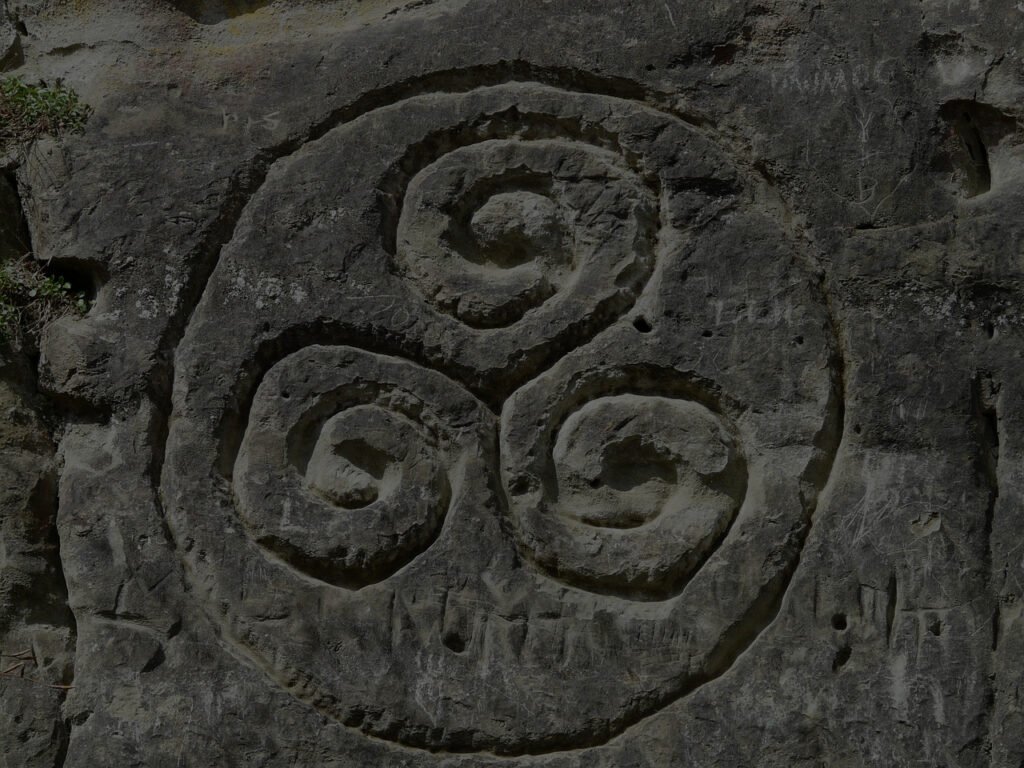Dream of a Sunday Afternoon in Alameda Park is a famous painting by Mexican artist Diego Rivera, created in 1947. The artwork is rich in symbolism and meaning, reflecting Rivera’s deep connection to his homeland and his passion for capturing the essence of Mexican culture. The park itself holds significance as a communal space where people gather on weekends to relax and socialize, representing themes of leisure and unity. Rivera’s use of vibrant colors and intricate details in the painting conveys a sense of harmony and vibrancy, celebrating the beauty of everyday life. The artwork also showcases Rivera’s admiration for indigenous Mexican art and traditions, incorporating elements such as folkloric costumes and traditional dances. Overall, Dream of a Sunday Afternoon in Alameda Park reflects Rivera’s artistic vision of capturing the spirit and vitality of Mexican identity.
Dream Of A Sunday Afternoon In Alameda Park Ap Art History Symbolism
Dream of a Sunday Afternoon In Alameda Park by Diego Rivera is a powerful mural that is rich in symbolism. The mural depicts a group of people from various social classes, genders, and backgrounds enjoying a leisurely Sunday afternoon in the park. The scene is filled with elaborate details and symbolic imagery that can be interpreted in a number of ways.
In dreams, parks often symbolize a place of relaxation, rejuvenation, and escape from the everyday stresses of life. The Sunday afternoon setting adds a sense of calm and contentment to the scene, suggesting that the people depicted are taking a break from their busy lives to enjoy the simple pleasures of nature and social interaction. This symbolizes the importance of self-care and the need to rest and recharge in order to maintain mental and emotional well-being.
The diverse group of people in the mural represents a microcosm of society, with individuals from different backgrounds coming together in a shared space. This can be seen as a symbol of unity, diversity, and inclusivity. The presence of people from all walks of life suggests that despite our differences, we can all come together to enjoy common experiences and find connection and community.
The figures in the mural are engaged in various activities, such as walking, cycling, playing music, and picnicking. These activities symbolize leisure, pleasure, and creativity. Engaging in activities that bring us joy and fulfillment can be a form of self-expression and a way to connect with our inner desires and passions. This can also be seen as a symbol of self-discovery and personal growth.
The imagery of nature in the mural symbolizes the beauty and abundance of the natural world. The lush greenery, flowers, and trees evoke feelings of peace, harmony, and vitality. In psychology, nature is often associated with healing and restoration, as spending time in natural environments has been shown to reduce stress and promote emotional well-being. The park setting in the mural can be seen as a sanctuary from the chaos of city life, a place where one can reconnect with the natural world and find solace in its beauty.
The presence of animals in the mural, such as the monkeys and birds, adds another layer of symbolism. In mythology, animals are often seen as messengers or symbols of wisdom, intuition, and instinct. The monkeys can be seen as playful and mischievous, while the birds symbolize freedom, grace, and spirituality. The animals in the mural represent different aspects of human nature and serve as reminders to embrace our animal instincts and connect with our inner wisdom.
Overall, Dream of a Sunday Afternoon In Alameda Park is a vibrant and complex work of art that invites viewers to ponder the significance of leisure, community, and the natural world. The symbolism in the mural encourages us to take time for ourselves, to appreciate the beauty of nature, and to embrace our diversity and interconnectedness as human beings. Through its rich imagery and symbolism, the mural serves as a powerful reminder of the importance of finding joy and meaning in the simple moments of everyday life.
Dream Of A Sunday Afternoon In Alameda Park Ap Art History Interpretation
Dream of a Sunday Afternoon in Alameda Park is a vibrant and bustling scene painted by Mexican artist Diego Rivera in 1947. The dream content of this artwork depicts a leisurely gathering of people from various walks of life, engaging in a range of activities such as strolling, conversing, and listening to music. The theme of community and social interaction is prominent in this dream, reflecting a desire for connection and camaraderie.
The underlying meanings of this dream can be interpreted as a reflection of Rivera’s own experiences and observations of society. The emotions conveyed in the painting – joy, relaxation, and togetherness – suggest a longing for a simpler, more harmonious way of life. The actions of the figures in the dream, such as playing instruments, dancing, and enjoying each other’s company, symbolize a sense of unity and shared purpose.
The setting of Alameda Park in the dream holds cultural significance as a public space that has historically been a hub of social activity and political engagement in Mexico City. The park serves as a metaphor for the broader social environment in which Rivera lived and worked, where individuals from diverse backgrounds come together to celebrate life and community.
From a psychological perspective, the dream of a Sunday afternoon in Alameda Park reflect Rivera’s own subconscious desires for connection and belonging. As an artist and political activist, Rivera was deeply engaged in issues of social justice and equity, and his dream serve as a symbolic representation of his vision for a more inclusive and harmonious society.
Overall, Dream of a Sunday Afternoon in Alameda Park offers a powerful message about the importance of community, connection, and shared experiences. Through its vivid imagery and themes of unity and togetherness, the dream invites viewers to consider the value of collective action and solidarity in creating a more just and equitable world.
Dealing Tips For Dream Of A Sunday Afternoon In Alameda Park Ap Art History
One common challenge related to “Dream of a Sunday Afternoon in Alameda Park” AP Art History is understanding and interpreting the complex symbolism and imagery present in the painting. Remedying this can be achieved by conducting thorough research on the artist, Diego Rivera, and his style of painting, as well as the historical context in which the artwork was created. Breaking down the composition of the painting into individual elements and analyzing their significance can also deepen one’s understanding of the piece.
Another challenge may be connecting the artwork to broader themes or movements in art history. To overcome this, it can be helpful to compare “Dream of a Sunday Afternoon in Alameda Park” to other works by Rivera or his contemporaries, as well as to examine how the painting fits into the broader context of Mexican muralism and social realism.
Managing these challenges effectively requires patience, perseverance, and a willingness to engage with the artwork on a deeper level. By seeking out resources such as academic articles, books, and online resources, one can gain valuable insights and interpretations that can enhance their understanding of the painting.
For readers who may be feeling overwhelmed or discouraged by the complexity of interpreting “Dream of a Sunday Afternoon in Alameda Park” or other dream experiences in general, it’s important to remember that art is subjective and open to interpretation. There is no right or wrong way to interpret a work of art, and it’s okay to have your own unique perspective on a piece.
If you’re struggling with understanding or interpreting a particular artwork, don’t be afraid to ask for help from teachers, classmates, or art experts. Engaging in discussions with others can often lead to new insights and interpretations that you may not have considered on your own.
Remember, art is meant to evoke emotion, provoke thought, and spark conversation. Embrace the challenges and complexities of interpreting artworks like “Dream of a Sunday Afternoon in Alameda Park,” and trust in your own unique perspective and understanding of the piece. With time and effort, you can overcome these challenges and develop a deeper appreciation for the artwork and its significance in art history.
FAQ For Dream Of A Sunday Afternoon In Alameda Park Ap Art History
1. What is the significance of Dream of a Sunday Afternoon in Alameda Park in AP Art History?
Answer: Dream of a Sunday Afternoon in Alameda Park by Diego Rivera is a masterpiece of Mexican muralism that showcases the artist’s unique style and presents a powerful social commentary on Mexican society.
2. What themes are explored in Dream of a Sunday Afternoon in Alameda Park?
Answer: Themes in the painting include Mexican history, culture, and identity, as well as class struggles and political symbolism. Rivera’s use of traditional Mexican elements and references to pre-Columbian history are central to the work.
3. What is the historical context of Dream of a Sunday Afternoon in Alameda Park?
Answer: The painting was completed in 1947 and is part of Rivera’s larger body of work that sought to depict the struggles and triumphs of the Mexican people. It was created during a time of political upheaval in Mexico and reflects the artist’s socialist beliefs.
4. How does Dream of a Sunday Afternoon in Alameda Park relate to other works by Diego Rivera?
Answer: Dream of a Sunday Afternoon in Alameda Park is one of Rivera’s most famous works and is considered a prime example of his artistic style. It shares common themes with his other murals, such as social justice, national identity, and the celebration of Mexican culture.
















